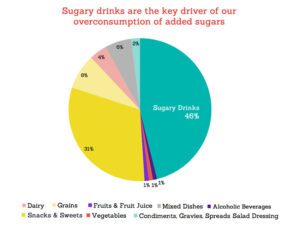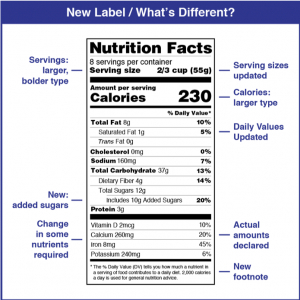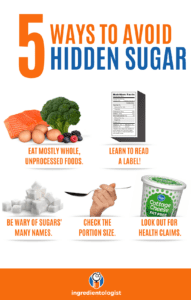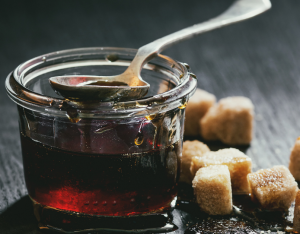In this guide I’ll explore the good, the bad and the ugly of sugar. As with most topics that appear in the media, sugar was front and center for a decent period of time. It also made not only one, but a few appearances from its discovery to how we know it today. The highlights are as follows:
1700 – 1900 Sugar production first began in New Guinea and China and quickly spread to India where mechanization was introduced and production rates increased. Soon, sugar was introduced all over Europe and quickly spread to America. During this period, sugar went through a series of booms but the rate at which it became a luxury product with huge demand was astonishing. For example, Great Britain consumed five times the amount of sugar in 1770 than they did in 1710. The rapid rise in the demand and production of sugar all over the world was largely due to the Europeans beginning to eat more sugar. What began as a means to sweeten tea only, sugar became widely used in jams, chocolates, cakes, pastries, candy and beverages and with this, sugar farms, mainly in the Caribbean Islands churned out more and more every year, until the average sugar consumption was at 100lbs per person in Britain.

1900 – 2000 Now a staple in people’s diets all over the world, sugar was claimed to be the ideal fuel source, giving you a quick burst of energy so you can function optimally, be alert and productive at all times. The never-ending advertisements about sugar being a key ingredient in so many foods that appeared on the radio, television and newspapers during the 20th century really imprinted the fact that sugar was healthy and in fact extremely ‘necessary’ in our diets. We can still see this today; just ask your grandparents what they think of sugar, cakes and sweet treats, or how much sugar they ate in their youth. Many of them would have remembered sugar as a common ingredient, that wasn’t avoided like it is today.
In the 1950’s, high fructose corn syrup (extracted from corn) was discovered and because it was cheaper and just as sweet as sugar, the United States and Japan started using it in soft
drinks and other processed foods. In America in 1984, Coca-Cola and Pepsi substituted sugar for high fructose corn syrup in all their beverages. To this day, all other nations use sugar, while America continues to use high fructose corn syrup!
In the late 1900’s, the American Medical Association’s Council on Food and Nutrition started to make people aware of the fact that sugar was not good for you and that it should be limited because of the link between sugar intake and diabetes and other diseases. But, the FDA strongly believed that fat is bad for our health, leading to a surge of ‘low-fat’ but high sugar foods, further contributing to disease.
2000 – present You’ll be surprised to find out that sugar substitutes were discovered due to real sugar being severely rationed during World War I and II, and not because we started to realise that sugar isn’t the best for our health! However, towards the end of the twentieth century and in the early 2000’s, we were well aware of the fact that sugar might just be the cause of obesity, diabetes and other related diseases. As with fat, sugar was now painted as the villain too, with sugar-free manufactured foods appearing everywhere.
Sugar substitutes like artificial sweeteners and sugar alcohols took the place of sugar in many products, and now more natural forms like honey, dates and stevia are becoming increasingly popular as we start to actively avoid sugar.
The evolution of sugar has taken a rollercoaster ride to where it is today, making it a highly controversial topic with many mixed beliefs and opinions. What’s important to note is that most of what we believe is information fed to us by the media under the influence of large businesses deeply involved in the sugar industry. It’s either “sugar is BAD” or “sugar is GOOD” and we’re continually getting swung one way or another.
To understand the enormity of this industry, it helps to look at these figures. The US produces about 9 million tons of sugar annually, putting it sixth globally, while it still imports a further 2 to 3 million tons each year. Americans adults are consuming on average 150 pounds of sugar each year, 66 of those pounds coming from added sugar – almost twice the amount recommended. And our kids are no better off. American kids are consuming over 65 pounds of added sugar per year, coming out to about 81 grams per day. This is despite the fact that sugar is more than 100% higher in America than the rest of the world due to the ‘Sugar Program’ rolled out by the USDA.
Government support in the forms of price support, guaranteed crop loans and tariffs allows sugar processors and producers to benefit by receiving roughly $4 billion per year in subsidies.
Ok, now that we know the history behind sugar and what the media has brainwashed us into believing about sugar, let’s take a look at the actual biochemical and physiological aspects of sugar. What does it do in the body? Where is it found? And should we be avoiding it?
Where Are Sugars Found?
Sugars are found naturally, occurring in many plants, or as added sugar to food and beverages. Fruits, vegetables and honey are natural sources of simple sugars but the most concentrated form of sugar is extracted from sugarcane and sugar beets in the form of sucrose. Sugars and syrups are added in the preparation process to many processed goods, but also to our tea and coffee.
In most parts of the world, sugar has become a major component of the human diet. What started off as means of energy and a way to make food more palatable has become more than just an ingredient. It’s a multi-million dollar industry and it has influenced the lives of many people.

Sugar is extracted from sugarcane (>80%) and sugar beet (<20%). It is mostly used in confectionary goods, processed foods, fast food, soft drinks and candy, but today we find it added to many products that shouldn’t have sugar in them such as dried fruit, dried meats and other ‘health products’.
Sugar is the generic name for sweet carbohydrates that come in different forms. The most common are:
Simple sugars or monosaccharides:
- Glucose
- Fructose
- Galactose
Compound sugars or disaccharides:
- Sucrose (glucose + fructose)
- Maltose (glucose + glucose)
- Lactose (glucose + galactose)
Sucrose is what we typically know as table sugar. Maltose comes from malting grain and lactose is the only sugar that can’t be found in plants as it is found in milk only.
Longer chains are called oligosaccharides or polysaccharides but are not classified as ‘sugars’. Instead, these longer chains are what we know as starches and fibers in plants that make up their structure and energy reserves.
Disaccharides are simple sugars bound together by a glycosidic bond and they’re hydrolyzed by the digestive system into monosaccharides. Our body cannot tell the difference between sugar added to manufactured foods or sugar found naturally in fruits and vegetables. All sugars get broken down into smaller monosaccharides in the same way. What differs is the rate at which the sugar is broken down and absorbed in the body depending on the source it comes from.
The rate at which carbohydrates or sugars are digested affects whether it has a low or high GI (glycemic index) or GL (glycemic load).
- Glycemic index – A numeric score given to a carbohydrate containing food that indicates how drastically it affects blood glucose. It is a scale from 0-100 with 100 being pure sugar. The more refined and processed a food, the higher the GI.
- Glycemic load – Calculated by: GI/100 multiplied by the grams of carbohydrate in a food. This score is more specific to a specific portion size of certain food and is therefore a better indicator of how the food will impact your blood sugar.
While GI tells you how quickly a food will make your blood glucose rise, it doesn’t tell you how high. GL gives you a bigger picture of that particular food’s impact. GI and GL are not necessarily correlated all the time, for example, watermelon has a GI of 80 but a GL of 5.
The source affects these factors and mostly depends on the amount of fibers present in the food. For example, whole grains have a lower GI as they take longer to digest because they still contain the fibrous grain husk.
Furthermore, a topic I talk about regularly, bioindividuality plays an important role here. While the GI and GL, in theory, give us numbers that help us predict how a certain sugar or carbohydrate will affect us, these numbers have their flaws. The response to carbohydrates is very dependent on the individual. This topic has been covered extensively by Robb Wolf in his book Wired To Eat where he explains how some individuals have markedly different responses to the same foods. Some people have little glycemic response to bananas, whilst others have a large glycemic response.
Understanding the mechanism behind this phenomenon is complex, but it is likely due to the level of insulin sensitivity of an individual. The more insulin sensitive you are, the more efficient your uptake of glucose from the bloodstream into cells is.
If I could, I would give everyone a continuous glucose monitor to track their glycemic response to different foods. This is a small device that is placed on one’s arm for roughly two weeks that measures glucose levels in the blood. This is a sure way to truly understand how you deal with certain types of carbohydrates.
Sugar and Health
The thing is, sugar is not only sweet and delicious. It’s addictive. We don’t look at a food source as being addictive. I’m sure you may have heard of arguments around whether sugar is as addictive as cocaine. My take: it sure is.
Sadly, manufacturers of sugary foods and beverages and the Sugar Research Foundation are accused of influencing consumers and creating doubt about the potential health effects of overconsuming sugar. Furthermore, they are influencing medical research and as a result; public health recommendations too. By identifying saturated fat as a major health hazard in the American diet, the sugar industry has flown under the radar with most not knowing what effects it has on the body.
Take Coca-Cola for example. They paid millions of dollars to health professionals, doctors, dieticians, researchers and health experts to spread controversial health claims relating to soft drinks and to shift the blame for diseases away from sugar.
Let’s take a look at some of the facts:
- After cereals and vegetable oils, sugar provides more calories than other food groups. In 2016, Americans were the largest consumers of sugar, followed by Germany and the Netherlands.
- Added sugar contributes zero nutrients but is a source of calories, providing roughly 4 calories per gram.
- The average American in 2014 was consuming 99 – 125 grams of sugar each day.
Sugar provides ‘empty calories’ which means you get no health benefit from it! Unless you’re an athlete who struggles to meet their total energy intake, you don’t need sugar in your diet.
How Sugar Impacts Our Health
Let’s take a step back to understand what sugar does when we eat it. Sugar, or carbohydrates, get metabolised into simple sugars, glucose, fructose and galactose in the stomach and intestines. From here, they’re absorbed into the bloodstream which signals to the pancreas to release the hormone insulin. Once in the blood, they’re able to enter our cells via a special family of glucose transporters called ‘GLUT transporters’, under the influence of insulin. They’re all over our body, and the more you have, the more efficiently glucose is cleared from the bloodstream. Once in the cells, sugars are broken down via glycolysis to produce ATP – energy!
You don’t want glucose to hang around in the blood because here it can latch onto other proteins or fat molecules. It’s these carb-protein or carb-fat compounds that can cause serious health problems – some of which will be mentioned below
In an ideal situation, the above process would occur rather rapidly. If you were to track your blood glucose, you would see it rise after a meal containing sugar, insulin would act and you would see it fall again back to baseline levels within 2 hours after eating. In the case of someone who is insulin resistant or sedentary, this blood glucose spike can take longer to return to baseline levels, resulting in sugar staying in the bloodstream for longer.
When sugar is overconsumed, i.e. you eat more than your body requires at that moment for energy, your body notices that there is an excess in energy (in the form of calories) and goes on to store the sugar as glycogen either in muscles or the liver. These glycogen stores have a limit to them, and if they’re ‘full’, any excess sugar will now be converted into fat molecules and stored as adipose tissue.
On its own, sugar is not the culprit to metabolic syndrome including obesity and diabetes. It is the overconsumption of sugar that is the major problem, as the process above describes. When more sugary foods and beverages are consumed, there is a markedly increased risk of gaining unhealthy amounts of fat and developing diabetes and metabolic syndrome

Apart from obesity and diabetes, other diseases associated with sugar consumption include:
- Hyperactivity
- Tooth decay
- Nutrient deficiency
- Alzheimer’s
Recently, studies have indicated that vegetable oil consumption has increased drastically. However, as was the case with sugar several years ago, consumers are completely unaware of the negative health impact vegetable oils have. There are some theories proposed by many health experts that it is not the consumption of carbohydrates or sugars alone that is leading to the many metabolic diseases we see today, instead it is the vegetable oils.
The combination of damaged fats and highly refined sugars can cause serious negative consequences. Fat and carbohydrates are a unique combination that is extremely palatable and addictive, leading to the overconsumption of sugars as well as fat.
Are Natural Sugars Better?
Not necessarily. Fructose is in the highest concentration in fruits and impacts our health in the same way that glucose or sucrose does, for example. Natural sugars can have a less pronounced effect on blood sugar and insulin because of the form they come in; like a fibrous fruit with a whole lot of other micronutrients, vitamins and minerals! This slows the rate at which the sugar enters the bloodstream and as a result impacts blood glucose far less.
Some natural forms of sugar are marketed to be healthier with the most common ones being:
- Coconut sugar (retains smalls amounts of minerals, antioxidants and fiber)
- Agave syrup (low-glycemic and possibly lower effect on blood sugar/insulin levels)
- Date syrup (contains vitamins, minerals, antioxidants, and amino acids)
- Sugar in the Raw
Sugar in the Raw is unique in that it is not bleached and is a more natural, unrefined sugar. While white sugar is made by refining sugarcane crystals to remove the molasses and trace nutrients, Sugar in the Raw retains these micronutrients as the juice is extracted from the sugarcane and crystalized through evaporation, giving it an edge in nutritional value.
What about High Fructose Corn Syrup? (HFCS) It’s controversial, but what we do know is that it is both GMO and some animal research has shown that it may have a greater propensity to be stored as body fat. There is also a lot of data showing it is fairly equivocal to regular sugar. The type of HFCS used is typically a 45 or 50% solution which is somewhat similar to the way sugar would work but there is also a 90% solution that would have much greater impact because the liver can only process so much fructose and then beyond that, it is stored as body fat.
Don’t be fooled though. All sugars can be hidden in foods in large amounts and end up impacting your health just as much as plain sugar.
Current Sugar Recommendations:
The FDA currently recommends 50g as 100% of the daily value (DV). In the case of vitamins and minerals, the daily value is represented on the label to indicate how much should be consumed, but for sugars, it’s intent is to indicate how much should not be exceeded.
For a person on a 2000 calorie diet, 50g of sugar represents 200 calories which is 10% of total daily intake.
The American Heart Association recommends that sugar contributes no more than half the daily value, 25g. That is less than 100 calories and 150 calories for men and women respectively, or six teaspoons for women and nine for men.
To put this into perspective; the average soft drink contains 39 grams of sugar. And some of us are consuming more than one a day!
Although we don’t need sugar to function properly – i.e it is not an essential nutrient, we still find it difficult to avoid. It has taken many years for the sugar recommendations to fall to what they are today, but in my opinion, they should fall even more.
Hidden Sources Of Sugar & Labeling Products
New guidelines have been set out for identifying sugar as ‘Added Sugars’ on the nutrient label. These new guidelines were released in 2016 and all products were required to have them by 2018.

Changes to the nutrition facts label – FDA
Total sugars represents added sugars and natural sugars. Added sugars are the ones you want to avoid. Natural sugars will be found in any product containing dairy or fruit.
The food and beverage manufacturing industry are smart. By calling sugar different names on their product labels (mentioned above), they can trick consumers into thinking the ingredient is not the ‘dreaded’ sugar and that it might be something else. Often, the name will sound unfamiliar and sometimes benign while in actually really just a form of sugar. Here are some examples of alternative names to look out for:
- Cane sugar
- Brown sugar
- Invert sugar
- High fructose corn syrup (HFCS)*
- Molasses
- Raw sugar
- Corn syrup
- Corn sweetener
- Honey
- Fruit juice concentrate

Understanding just how much sugar is in a product can be tricky thanks to ambiguous labelling. However, a good understanding can be had if you become a detective when reading a label, and take note of the following:
- Ingredient list: make sure sugar is NOT there. If it is, make sure it is towards the end of the list as the ingredients with the greatest amount are listed first. Look out for alternative names for sugar (see below).
- Nutrient label: Look at the amount of carbohydrates (measured in grams) and ensure that the ‘Total sugars’ is low (I aim for below 5 grams if there is no way of getting around the product). With 4 calories per gram, 15 grams already provides 60 calories from sugar alone.
- Hidden sugars: Apart from the sugars we know with names ending in ‘-ose’, sugar added to foods can be named in various ways that sometimes sounds healthier, but in actual fact it is just sugar. For example, raw sugar or cane juice extract.
*A very cheap form of sugar is corn syrup which is produced from converting the starch in corn into sugars: maltose, glucose and fructose. High fructose corn syrup is produced by further processing corn syrup to convert some of its glucose into fructose. The production of HFCS is cheaper and it became a popular substitute for sugar in soft drinks and other processed foods.
New requirements by the FDA, effective in 2018, stated that “Added sugars,” in grams and as percent Daily Value, must be included on the label.
Another important point to make is that many products that are ‘low-fat’ or ‘fat-free’ typically have added sugar to compensate for the depleted flavor as a result of reducing the fat content. Additionally, gluten-free products, and sometimes ‘healthy’ paleo or wholefood bars contain added sugars.
Always put on your detective gear when reading labels! It’s a mystery out there and sugar always seems to pop up where you least expect it.
Do We All Need To Avoid Sugar?
We should all aim to actively reduce sugar in our diets. Following a whole-foods based ketogenic diet or paleo diet is an effective way to do so. When foods are in their most natural form, they’re obviously going to have no added sugars. Following diets that purely aim to reduce calories or cut out certain food groups only are more likely to still contain processed foods and low fat or fat free options making sugar intake far more likely.
The amount of sugar one can have without negatively impacting their health depends largely on their lifestyle. Some of the major factors that influence how sugar is utilized in the body include:
- Exercise level
- Muscle mass
- Stress levels
- Insulin sensitivity
- Gut microbiome health
The more you exercise and the more muscle mass you have, the more glucose transporters you’ll have. This simply means that your body will be better at utilising the sugars you consume and you have a higher insulin sensitivity, making sugar intake not as problematic compared to someone who is sedentary.
If you’re highly active, it can be advantageous to have a high glycemic, quick burning carb for a fuel source as your body will use it up. I like to think of it as a fire. If your fire is roaring, you can add more wood and it will burn but if your fire is just smoldering, adding more wood isn’t going to stoke the fire in the same way. It’s the same with sugar and your ‘metabolic fire’ within. Sugar on its own doesn’t have to be labeled “bad.” The problem is when sugar is combined with so many bliss point ingredients like fats and salt that it becomes addictive. I mean, since when is maple bacon chocolate a real food?
With that said, anyone who over consumes sugar is increasing their risk for inflammation, weight-gain, diabetes, Alzheimer’s and cardiovascular disease. This over-consumption however is a sliding scale based on the amount of muscle mass you have, how active you are and your insulin sensitivity. It’s a snapshot of any of those at any given moment. Consuming polyphenols like cinnamon, red wine, green tea, and Berberine (my favorite!) can also help with blood sugar regulation as well.

There are ways we can minimize the impact sugar has on our blood glucose. Here are some of my favorite hacks for when I do consume any sugar:
- Exercise: a quick HIIt workout or even a slow jog or walk significantly improves your body’s ability to take glucose from the blood and into the cells to be used for energy (instead of it being stored as fat)
- Sauna or cold exposure: both of these can up-regulate the number of glucose transporter in tissue
- Ensure fiber is present: by consuming highly refined carbohydrates with a source of fiber, the rate at which it enters the bloodstream is slowed
- Glucose disposal agents: compounds such as berberine, bitter melon extract and cinnamon are effective supplements for reducing sugar’s impact
From a luxury item to a public health menace, sugar has become the world’s most influential flavor. It is difficult to avoid completely, and we can only do our best to identify it, eliminate it and educate people on its health effects. With all the hype around sugar, artificial sweeteners and sugar substitutes are becoming a huge market and a new area consumers need to learn how to navigate. That’s why I’m going to take a deep dive into artificial sweeteners in my next guide, to help you make the right decisions. So keep an eye out on my website so you don’t miss out!
Please share this article with your friends and family. It may be the next step they need to improve their health. Share your thoughts with me on Instagram or Facebook – @ingredientologist!
References
- https://www.nytimes.com/interactive/2019/08/14/magazine/sugar-slave-trade-slavery.html
- https://robbwolf.com/wiredtoeat/
- https://www.aei.org/wp-content/uploads/2017/11/Analysis-of-the-US-Sugar-Program.pdf
- https://en.wikipedia.org/wiki/Sugar
- https://www.fda.gov/food/food-labeling-nutrition/changes-nutrition-facts-label
- https://www.heart.org/en/healthy-living/healthy-eating/eat-smart/nutrition-basics/understanding-food-nutrition-labels
- What We Eat In America, NHANES 2013–2014
- https://www.health.harvard.edu/diseases-and-conditions/the-lowdown-on-glycemic-index-and-glycemic-load
- https://sugarscience.ucsf.edu/dispelling-myths-too-much
- https://www.heart.org/en/healthy-living/healthy-eating/eat-smart/sugar/how-much-sugar-is-too-much
Downloadable guide may be found directly on Shawn's site here:
Stay connected with Shawn Wells:
- Instagram @ingredientologist
- Facebook /Ingredientologist
- LinkedIn /zonehalo
- shawnwells.com
Want to be featured by ICON Meals? Submit your stories to info@iconmeals.com or send us a DM on IG or Facebook!

